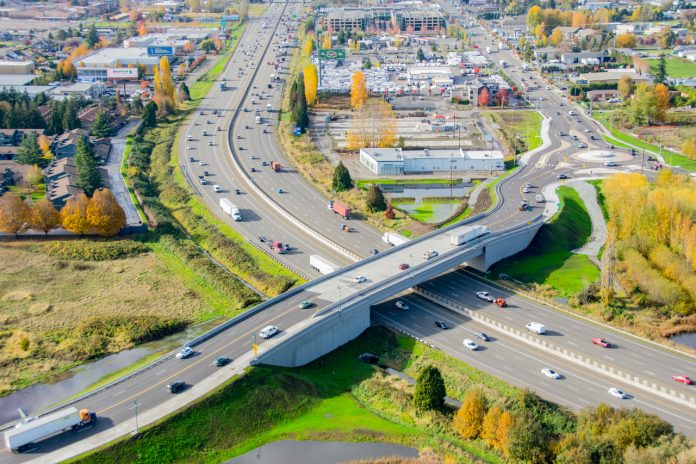
Though radically different, the twin budget proposals released early this week by the Washington State Senate and House share a focus on highway expansion. The Senate budget proposes a broad array of new transportation revenue sources intended to stave off cuts, including a brand new 10% sales tax on new e-bikes and a new vehicle fee for public transit agencies. Contrarily, the House budget includes deep cuts across public transit, active transportation, and commute-trip reduction work.
The main thing the two budgets do have in common? A laser focus on getting Washington’s highway capacity projects back on track, after cost increases threatened to force the legislature to cancel or defer many of them indefinitely. Under both budgets, megaprojects like the North Spokane Corridor, the Puget Sound Gateway, Clark County’s Interstate Bridge Replacement, and a widening I-90 at Snoqualmie Pass would all continue to move forward.
Both budgets propose an increase in the state’s gas tax, six cents in the Senate and nine cents in the House, largely because few other revenue sources get close to providing the sums available to fill the gap on these large highway projects. The Senate budget, for example, would allocate $2.5 billion over the next six years to plugging budget holes, while keeping more than $1 billion on hand for potential projects down the road, like the widening of I-5 through the Nisqually Delta near Olympia.
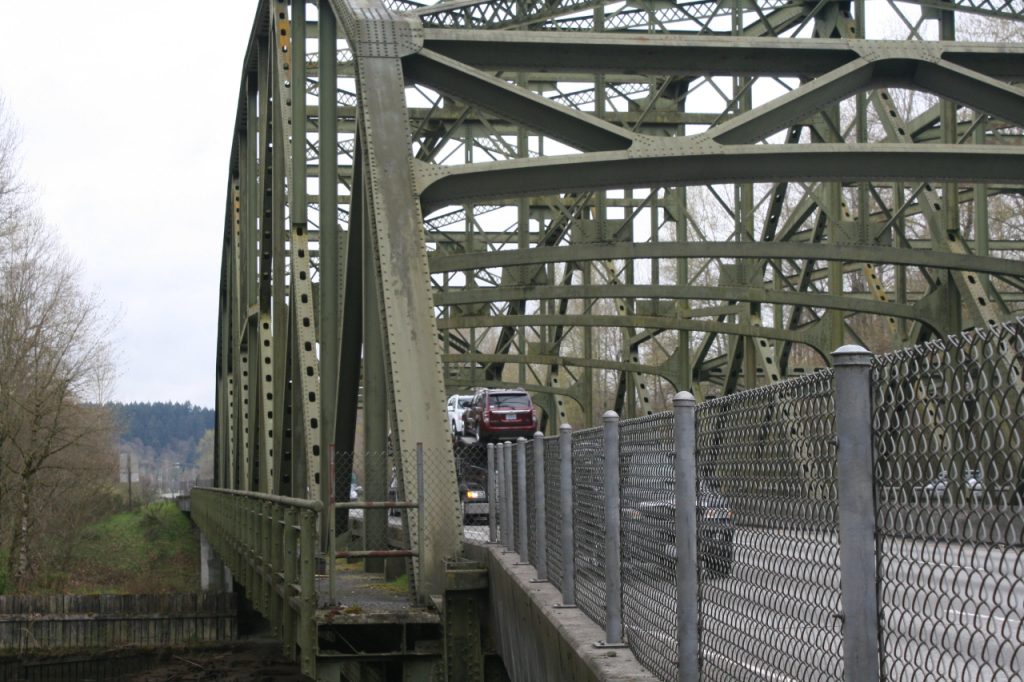
But lurking beneath the surface is the fact that it’s these highway projects themselves that are the root cause of the budget crisis legislators are scrambling to fix. As detailed in presentations to the House and Senate transportation committees last month, deferring highway projects that haven’t yet been contracted would be the easiest path to balancing the state’s transportation budget. But while the two chambers — and the two political parties — in Olympia are out of alignment on many different things, the perceived need to continue hitting the gas pedal on expanding the state highway network is not one of them.
Senate budget focuses on achieving “bipartisan” agreement
The Senate’s proposal would raise more than $3 billion over the next six years via the gas tax increase, a luxury vehicle tax on cars and trucks that cost more than $100,000, expanded rental car and carsharing fees, and increased fees on electric vehicles. It also includes some bizarre revenue options, including the 10% e-bike sales tax, and a move to force transit agencies to not only pay vehicle registration fees on their taxpayer-funded vehicles but also to pay tolls on public roads as well.
Those new taxes are largely symbolic rather than significant revenue generators. An e-bike sales tax only brings in $9 million over a six year period, and additional fees on transit $33 million. This is pocket change in the context of the multi-billion-dollar budget.
Marko Liias (D-21st, Edmonds), chair of the Senate’ transportation committee, was open about the fact that those items were included at the request of the ranking Republican member of the committee, Curtis King (14th, Yakima), in order to bring along other Republicans.
“When we entered into bipartisan negotiation, one of the principles that Senator King served to the table was: if we’re going to be investing more in the system, he wanted as a priority that a variety of users would be contributing,” Liias told The Urbanist.
The Senate’s Republican caucus wanted to repeal Washington’s Climate Commitment Act (CCA), which represents the biggest new funding source for public transit and active transportation projects seen in Olympia in decades. So it’s not surprising that the top Republican on the transportation committee is fine with sticking it to transit riders and people who are trying to get around without a car in Washington. Voters are not on the same page: a Republican-backed state initiative seeking to repeal the CCA just failed by a wide margin in 2024.
Why then is the prospect of producing a bipartisan budget so appealing to the Democratic caucus that they’re willing to go along with the plan? After steadily building their majorities over the last decade, Democrats hold 60% of the seats in both the House and the Senate. That makes a bipartisan package a luxury, rather than a need — unless the package is so unpopular with the Democratic caucus that defections are widespread when it’s up for vote.
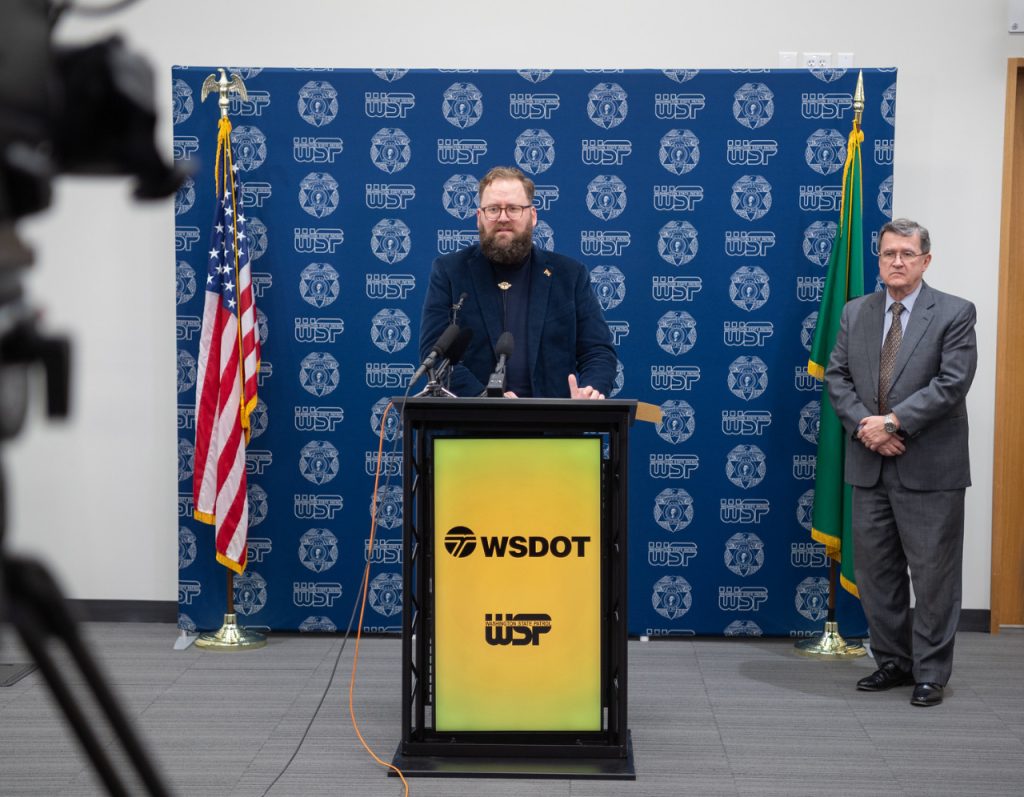
Liias told The Urbanist that he sees the benefits accrued outweighing the concessions, and asserted that progressive priorities will ultimately come out ahead in the context of the overall budget.
“The e-bike fee raises $9 million and we invest $266 million over the same time period into additional new funding for active transportation. So we are asking everybody to contribute, but we are leaning in to fund the active transportation, particularly the safe systems infrastructure that people need everywhere,” Liias said.
When it comes to the fact that Washington is on the cusp of rolling out an e-bike rebate at the same time that the Senate is proposing a new surcharge, Liias said at least they weren’t proposing to scrap the rebate program all together. The e-bike rebate program, which has been in the works for nearly two years, is set to make a $300 rebate available to the general public via lottery system, and a separate $1,200 rebate will be open to households showing proof of modest income.
“There certainly was an idea on the table about ending the rebate program,” Liias said. “The surcharges certainly add a little bit to the upfront cost for folks that are low income that qualify for a higher value rebate, and [it] more than covers the surcharge. And for folks that are not low income, it’ll be more than the cost of the surcharge, so they’ll still be getting a net benefit from it.”
$3,000 is not an uncommon price for a more heavy duty e-bike and many cargo e-bikes can run much more than that. That’s spendy for a bike but not as a car replacement, but the larger issue is whether the state should be adding any disincentives to purchasing e-bikes at all.
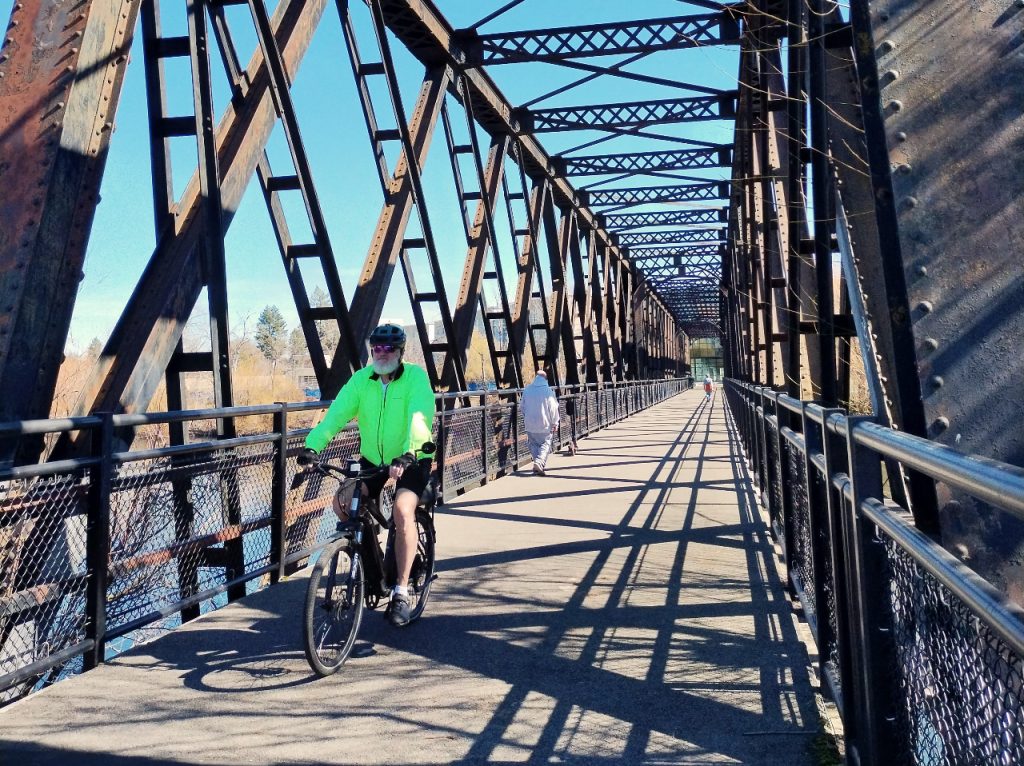
On the added fees for public transit, Liias pointed to two new grant programs that are included in the Senate budget that will outweigh the new charges on public transit vehicles. One is a $100 million transit safety grant program, and the second is $100 million for green transit projects, e.g. electric bus purchases and charging infrastructure. Neither of those grants would explicitly make up for any lost service that could have been funded via the new added fees that public transit agencies will now have to account for.
While the concept of adding costs to transit agencies and e-bike riders clearly cuts against priorities that the broader Democratic caucus has, the Senate’s Majority Leader is still assessing whether to upset the apple cart over the issue.
“I’m still kind of mulling what to do about that,” Senate Majority Leader Jamie Pedersen (D-43rd, Seattle) told The Urbanist. “I have not yet heard concerns from the agencies about it. If I heard from, you know, Sound Transit or Metro, that it would become a significant problem for them, rather than just a symbolic thing, then that might change my perspective on what I should do.”
House budget focuses on highway projects that are “well underway”
In contrast with the Senate budget, the House proposal does propose putting some highway megaprojects on ice: an expansion of State Route 18 in southeast King County, for example, would be pushed out past 2029, as would a widening of State Route 9 in Snohomish County. In that way, it’s more fiscally conservative than the Senate proposal, which proposes moving full speed ahead with those projects.
“There is a number of projects that we just can’t begin to think about going forward with because of the revenues that we’re working with at this point in time,” House transportation committee chair Jake Fey (D-27th, Tacoma) told reporters Monday.
Fey confirmed that a guiding principle behind the House budget wasn’t which projects were most aligned with state goals, but rather which projects were simply further along in the process.
“A lot of these projects are at different stages. We try to not interrupt projects that were well underway and ready for the next phase. And then there’s some projects that are just in the right-of-way [acquisition] and planning stages, and those were the ones that we were more focused on, pushing those programs and projects out,” Fey said.
But the House proposal also takes an ax to multimodal programs, cutting the state’s Regional Mobility Grant program, which pays for transit access projects around the state. Existing projects will be funded, but no new regional mobility grants will be offered until 2031, under the House’s plan.
And in an ironic move, the House proposal would also indefinitely suspend the Sandy Williams Connecting Communities grant program, which is geared at repairing the harmful legacy of Washington’s past highway decisions. Projects funded via the Sandy Williams program include a study looking at how to improve access to Seattle’s Judkins Park light rail station at Rainier and I-90, and how to improve access across I-5 in Tacoma, in Fey’s district.
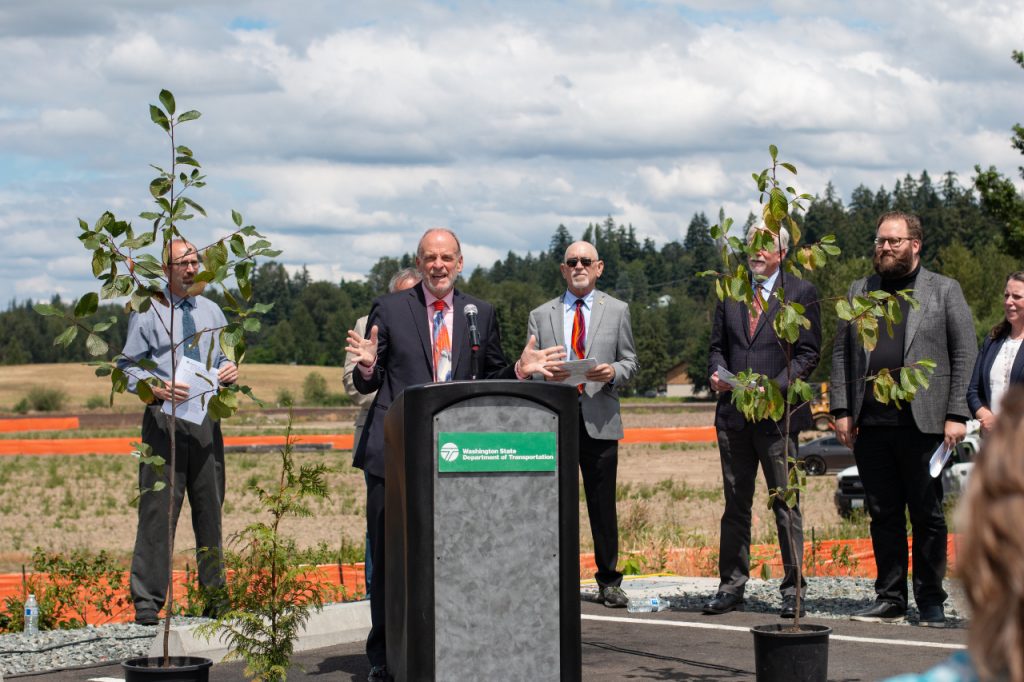
Additionally, the House proposal take a hatchet to commute trip reduction (CTR) programs. By providing dollars to organizations around the state that are focused on offering alternatives to single-occupancy vehicle travel, CTR programs encourage transit use, coordinate vanpools, and provide transportation education. Clearly, they are climate programs.
In a letter sent in the wake of the budget’s release, a broad group of organizations engaged in transportation demand management asked for the cuts to be reversed. They include Expedia, Seattle Children’s, Commute Seattle, and cities like Seattle, Bellevue, Tukwila, and Vancouver.
“CTR is a cornerstone of Washington’s efforts to reduce congestion and air pollution, directly supporting the state’s goals under the Clean Air Act. For over 30 years, this program has provided a proven, cost-effective way to reduce single-occupancy vehicle trips and increase access to reliable, affordable transportation,” the letter states. “Cutting CTR funding by 60% would severely undermine the state’s ability to leverage this long-standing, successful program — diminishing our ability to meet state environmental and transportation goals and compromising the effectiveness of a law that has served Washingtonians for decades.”
The sum savings of these cuts is minuscule, even when just looking at the scale of the funding being used to plug highway project budget holes, much less their full project costs. The Puget Sound Gateway projects alone need $153 million to move forward, along with $227 million for Snoqualmie Pass and $267 million for the North Spokane Corridor.
Proposals ignore climate implications
At a time when the federal government is not only withdrawing the U.S. from international climate agreements but also actively working to claw back federal dollars that had been allocated to climate-friendly modes of transportation, the climate impact of the state’s transportation budget remains an area of weakness for Democrats in Olympia.
Ahead of this year’s legislative session, as the budget crisis was beginning to come into full view, both Liias and Fey actively downplayed the idea that the state is focused on, despite the amount of funding within the budget that is allocated to capacity projects and the head of the Washington State Department of Transportation (WSDOT) was issuing warnings about continuing to invest in new infrastructure over basic maintenance. Even as the proposed Senate budget allocates more than $2.5 billion over the next six years to highway capacity projects, that hasn’t changed.
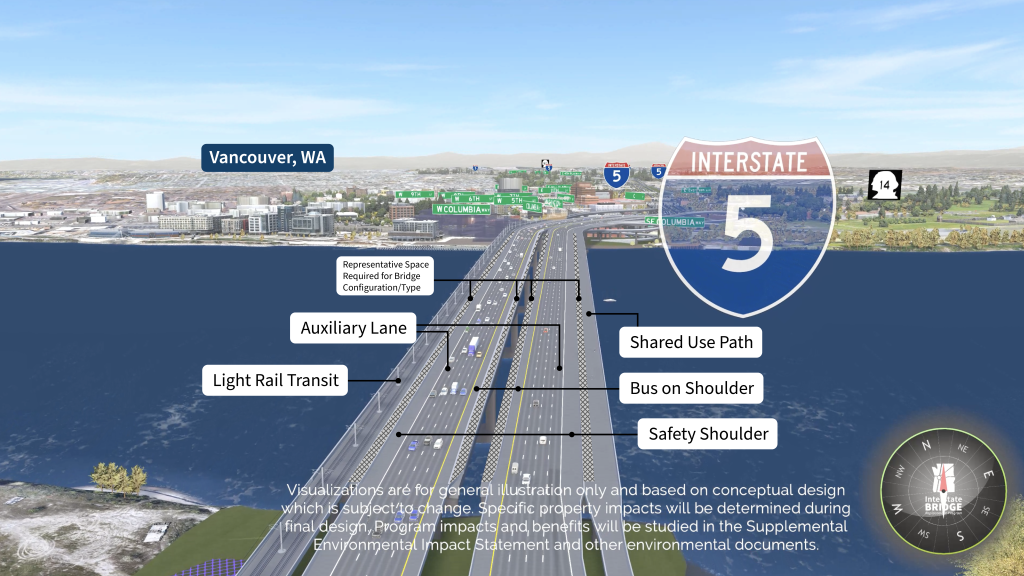
“I just fundamentally disagree that we’re expanding the highway network,” Liias said this week. “The one greenfield highway that’s being proposed — the two — are the Gateway Program and North Spokane Corridor. Those were projects that were initiated 10 years ago, and we’re in the last stages of them. I don’t propose that we do those sorts of projects in other parts of the state.”
As other states, like Colorado, have begun to calculate climate costs on their new highway projects and shift resources to greener projects, Liias defended the way that Washington builds highways.
“We, in the environmental review of projects, are looking at the impacts they have in terms of congestion and adding induced demand,” Liias said. “We’re looking at the impacts in terms of capacity for various users of various types. We’re doing that because of the HEAL Act. We’re doing environment justice review, which is not just thinking about the impacts on adjacent communities, but also who are the overburdened and vulnerable communities that haven’t been consulted or engaged?”
But the existing system allows WSDOT to conduct environmental review on its own projects, doesn’t allow for any outside agency to confirm that the state’s highway projects are in alignment with state climate goals. The recent environmental review of the Interstate Bridge Replacement — the most expensive highway project in Pacific Northwest history — completely omitted the issue of induced demand, the concept that a widened highway will fill up with traffic, cancelling out any benefit in travel time that was gained by expanding it.
The prioritization of widening SR 18 also raised questions about the assertion that Washington is being data-driven with its decision making.
While agreement between the twin budgets is set to be hammered out over the next month, all signs point to the legislature continuing to focus on a small number of highway capacity projects, to the detriment of broader state goals. Even a major budget crisis has not yet been enough to prompt a rethinking.
Ryan Packer has been writing for The Urbanist since 2015, and currently reports full-time as Contributing Editor. Their beats are transportation, land use, public space, traffic safety, and obscure community meetings. Packer has also reported for other regional outlets including Capitol Hill Seattle, BikePortland, Seattle Met, and PubliCola. They live in the Capitol Hill neighborhood of Seattle.



